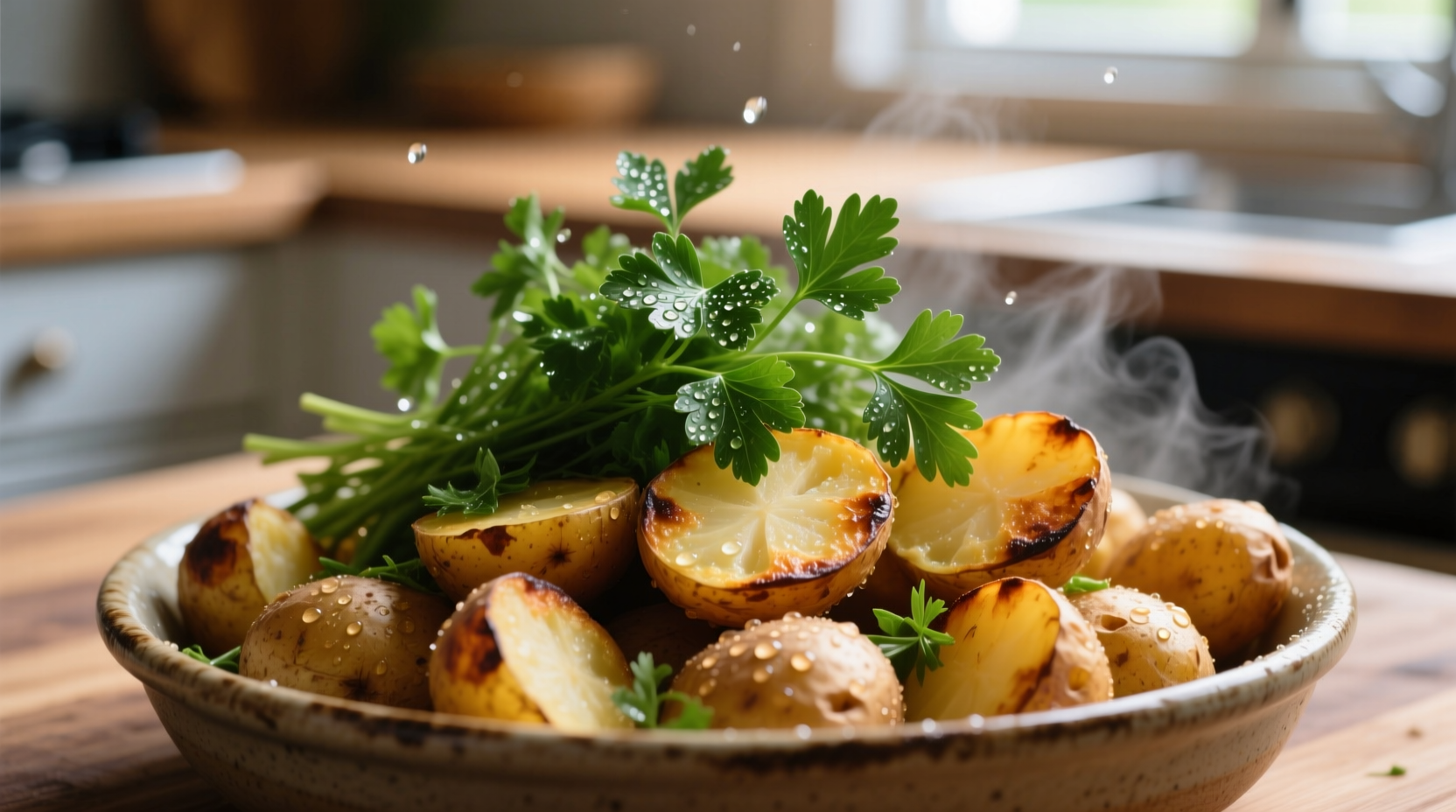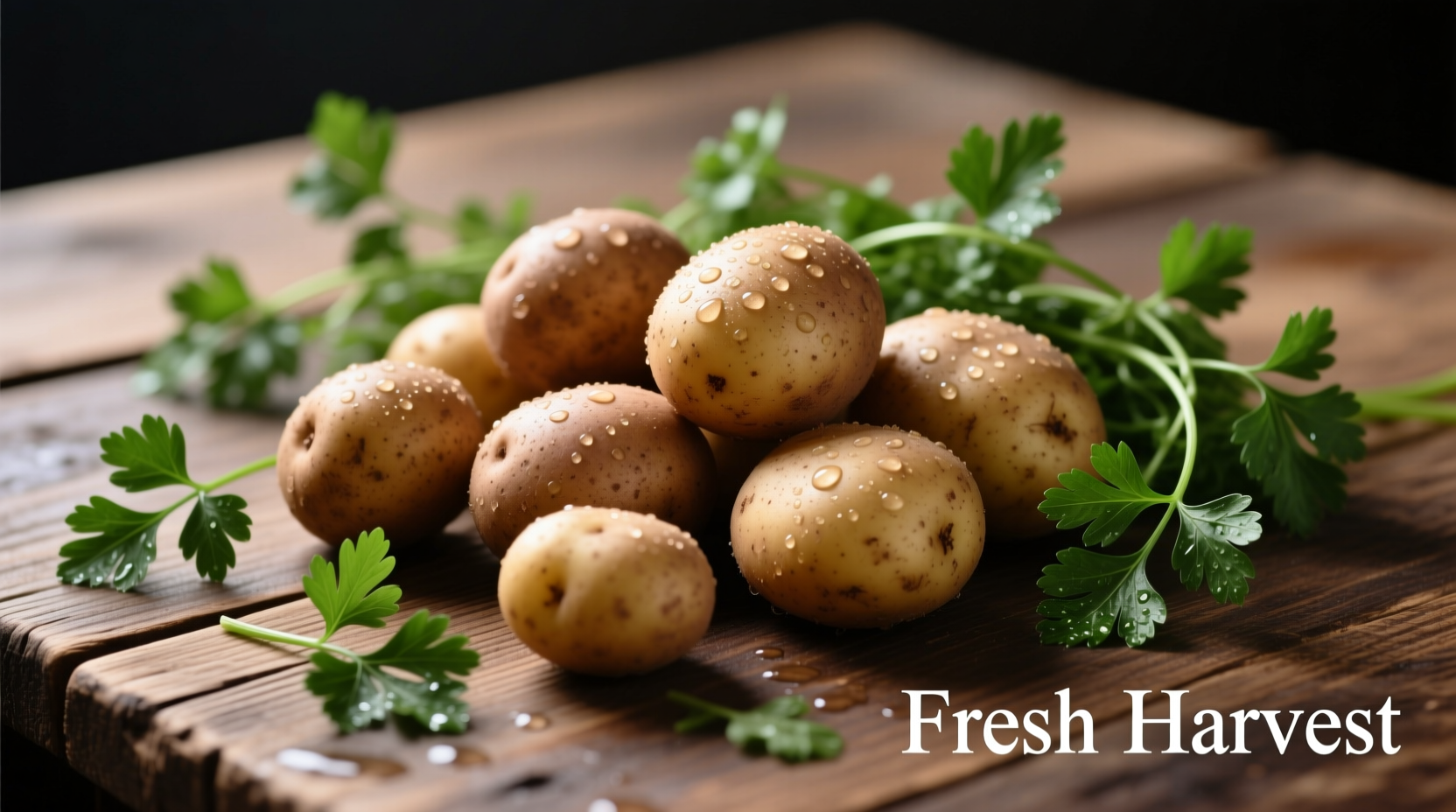When you combine potatoes and parsley, you're tapping into a culinary relationship perfected over centuries. The earthy, neutral canvas of potatoes perfectly absorbs parsley's fresh, slightly peppery notes, creating dishes that satisfy both comfort food cravings and refined palates. This pairing works because potatoes' starch molecules bind with parsley's volatile aromatic compounds during cooking, enhancing flavor retention while providing complementary nutritional benefits.
Why This Culinary Pairing Works Scientifically
Food science reveals why potatoes and parsley complement each other so effectively. Potatoes contain significant amounts of glutamic acid, which creates umami richness when cooked, while parsley brings high concentrations of apiol and myristicin compounds that provide its distinctive fresh flavor. When combined, these elements create what culinary chemists call flavor layering—where neither ingredient overpowers the other but instead creates a more complex taste profile than either provides alone.
| Nutrient | Potatoes (100g) | Parsley (100g) | Synergistic Benefit |
|---|---|---|---|
| Vitamin C | 19.7mg | 133mg | Enhanced absorption of iron from potatoes |
| Potassium | 421mg | 554mg | Supports cardiovascular health balance |
| Dietary Fiber | 2.2g | 3.3g | Improved digestive benefits when consumed together |
Data from the USDA FoodData Central confirms this nutritional synergy. The vitamin C in parsley significantly enhances iron absorption from potatoes, making this combination particularly valuable for vegetarians and those seeking plant-based nutrition.
Historical Evolution of This Classic Pairing
The marriage of potatoes and parsley spans centuries and continents. When potatoes were introduced to Europe from South America in the 16th century, European cooks initially struggled with this unfamiliar tuber. Historical records from The British Library's herbals collection show that parsley—already a staple in European gardens—became the perfect culinary bridge, helping Europeans accept this new food through familiar flavor combinations.
By the 18th century, French chefs had perfected techniques like pommes persillade, where boiled potatoes are tossed with parsley, garlic, and butter—a technique that remains fundamental in French cuisine today. This historical adaptation demonstrates how culinary traditions evolve through practical experimentation rather than theoretical design.
Practical Applications for Home Cooks
Understanding the science and history helps, but practical application matters most. Here's how to maximize this pairing in your kitchen:
- Timing matters: Add parsley at the end of cooking to preserve its volatile flavor compounds
- Preparation technique: Chop parsley finely to increase surface area for better flavor distribution
- Ratio guidance: Use 2-3 tablespoons of fresh parsley per pound of potatoes for optimal balance
- Cooking method: Roast potatoes first, then toss with parsley and lemon zest for maximum flavor absorption

When This Pairing Works Best (And When It Doesn't)
While versatile, this combination has context boundaries. Professional chefs note that potatoes and parsley work best in:
- European and Mediterranean preparations
- Dishes where subtle herbal notes complement rather than dominate
- Preparations involving roasting, boiling, or mashing
They're less effective in:
- Strongly spiced Asian or Latin American dishes where bolder herbs like cilantro work better
- Dessert applications (though innovative chefs are experimenting with sweet potato-parsley combinations)
- High-acid preparations where parsley's flavor gets overwhelmed
Avoiding Common Preparation Mistakes
Many home cooks make these critical errors when combining potatoes and parsley:
- Adding parsley too early in cooking, causing flavor degradation
- Using dried parsley instead of fresh (dried parsley loses 80% of its volatile compounds)
- Not properly drying parsley before use, which creates steaming rather than sautéing
- Using the wrong potato variety (waxy potatoes like Yukon Gold work better than starchy Russets for many parsley applications)
For optimal results, always use flat-leaf (Italian) parsley rather than curly parsley when cooking with potatoes. Flat-leaf varieties contain higher concentrations of essential oils and have a more robust flavor that stands up to cooking.
Storage and Selection Tips
Maximize freshness with these professional techniques:
- Store parsley with stems in water (like flowers) in the refrigerator
- Keep potatoes in a cool, dark place away from onions (which accelerate sprouting)
- Never refrigerate potatoes—cold temperatures convert starch to sugar
- Wash parsley only immediately before use to prevent premature wilting
Three Classic Dishes Showcasing This Pairing
- French Pommes Persillade: Boiled potatoes tossed with parsley, garlic, and butter—a staple in French bistros since the 1800s
- Greek Patates Skordalia: Roasted potatoes with parsley and garlic dip, showcasing Mediterranean flavor balance
- Irish Boxty with Parsley Butter: Traditional potato pancake served with fresh parsley compound butter
Each of these dishes demonstrates how different culinary traditions have adapted this fundamental pairing to create distinctive regional specialties.
Expanding Your Culinary Repertoire
Once you've mastered basic potato-parsley combinations, experiment with these professional variations:
- Add lemon zest with the parsley for brighter flavor notes
- Infuse olive oil with parsley stems before cooking potatoes
- Create a parsley pesto to toss with roasted potatoes
- Use parsley root (common in European cooking) alongside regular potatoes for deeper herbal notes











 浙公网安备
33010002000092号
浙公网安备
33010002000092号 浙B2-20120091-4
浙B2-20120091-4